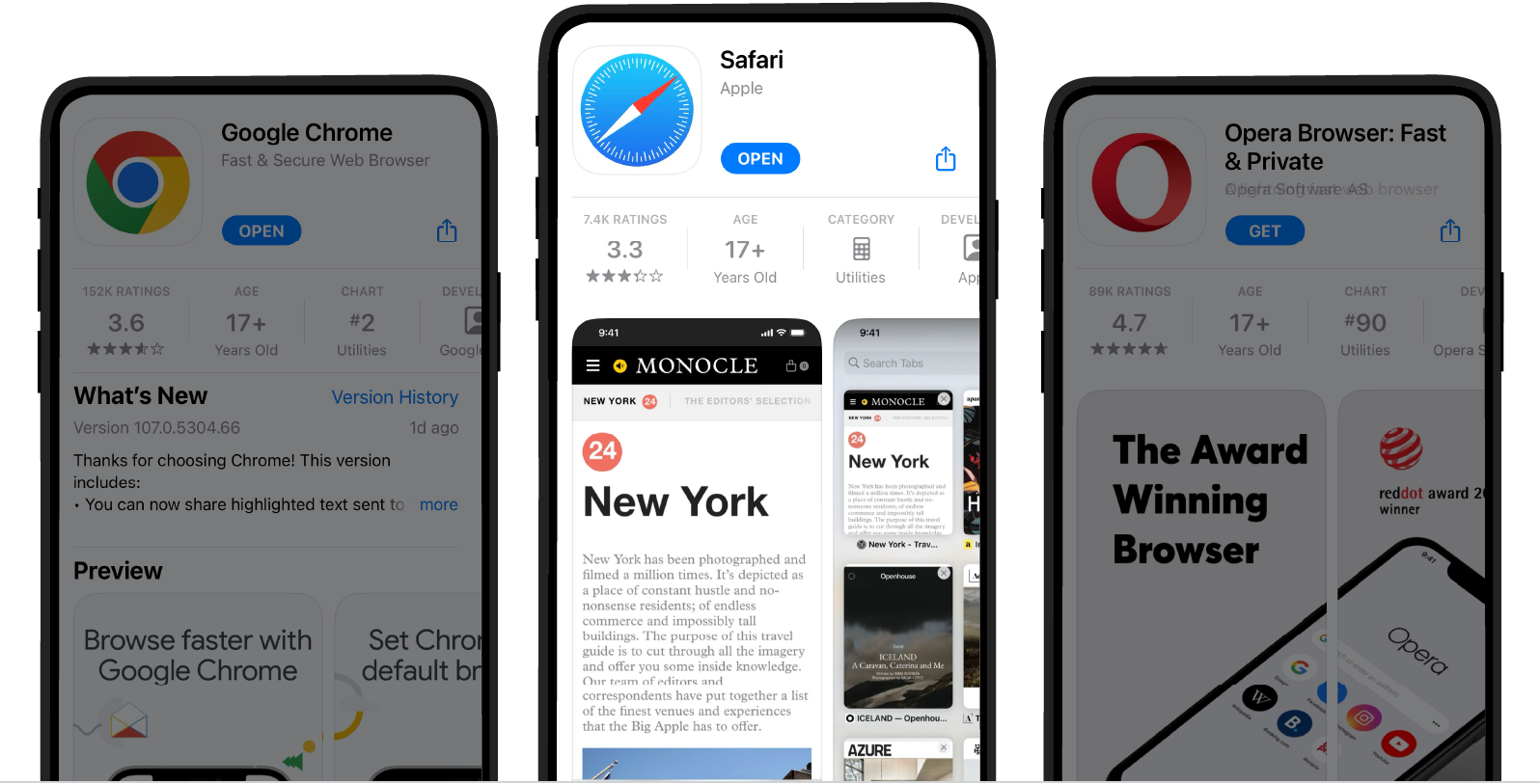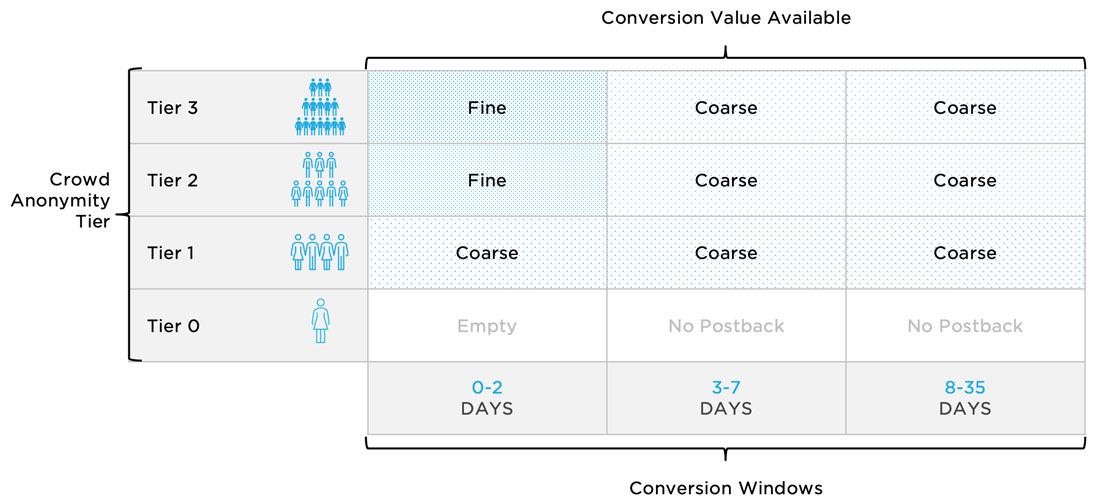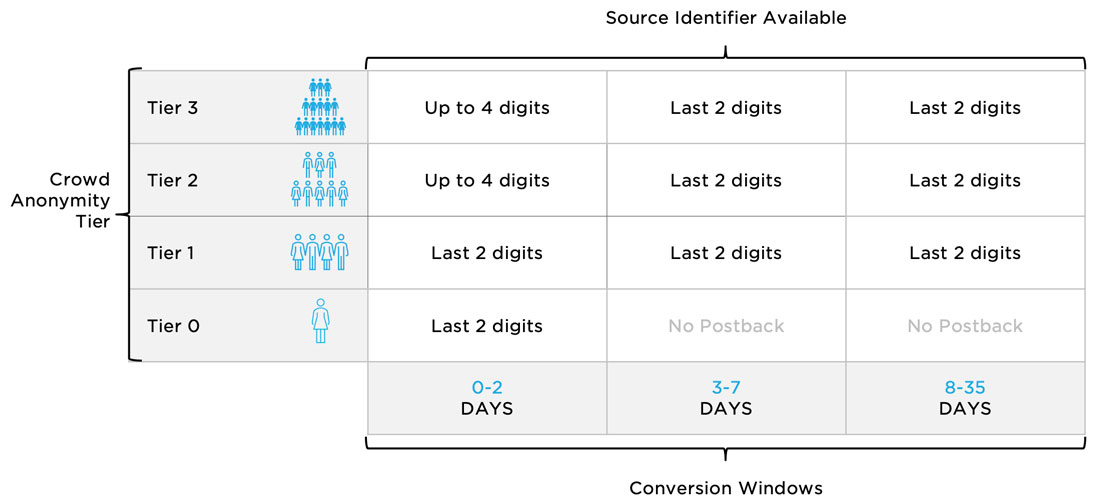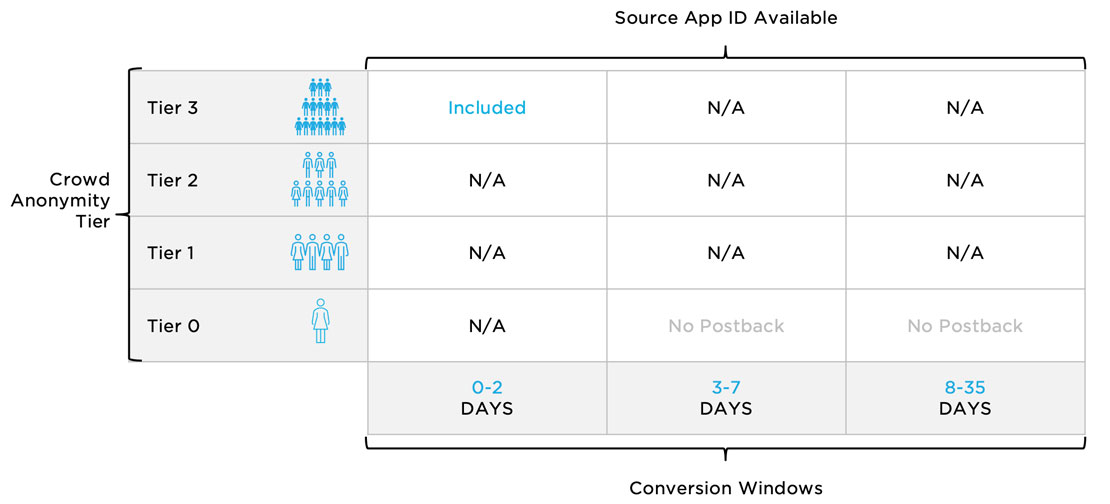What to know about SDK updates, conversion postback timing, and more
iOS 16 + .1 = SKAdNetwork 4.0
No one was surprised when iOS 16 launched and SKAdNetwork 4.0 was MIA, but its inclusion in the release of iOS 16.1 on October 24th was certainly sooner than some had expected. See Apple’s official news update here.
The good news is that much of the guessing game that has been ongoing since Apple announced SKAdNetwork 4.0 at WWDC 2022 in June is now over. New documentation and release notes from Apple brought more clarity on a number of open questions. This clarity and the ability to fully test SKAdNetwork 4.0 will allow advertisers, mobile measurement partners (MMPs), ad networks, and publishers to finalize their support plans in preparation for an adoption upswing.
We will unpack some important developments and clarifications regarding:
- Rate of adoption for SKAdNetwork 4.0
- SKAdNetwork for web ads
- Conversion postback timing
- And newfound details on crowd anonymity
However, before we do, let’s address one of the biggest questions any marketer may be asking.
When will it be time to update my Kochava SDK?
Apple’s October 24th release provides SKAdNetwork 4.0 functionality in Xcode for our Kochava engineers and developers to begin formal code testing with the newly available SKAdNetwork APIs. After this testing, our product support plan will be formally finalized.
A new Kochava iOS software development kit (SDK) will be published after Xcode 14.1 moves beyond the release candidate phase and is officially released by Apple. Subscribe to our email newsletter to ensure you don’t miss important updates.
SKAdNetwok 4.0 adoption rate expectations
Some may be feeling suddenly rushed and underprepared for SKAdNetwork 4.0 now that it’s on the doorstep, but take a breath and let out a sigh of relief. SKAdNetwork 4.0 data will only be at play when each of the following circumstances are true:
| 1 | 2 | 3 |
| The ad network serving an ad generates the SKAdNetwork 4.0 signature | The environment where the ad is shown is: iOS 16.1+ for in-app ads Safari 16.1+ for web ads |
The target advertised app is App Store-signed and installed on a device with iOS 16.1+ |
If the adoption curve of prior SKAdNetwork versions is any indicator, it will take some time for ad networks and publishers to implement support, and for app developers to fit the needed SDK updates into their dev cycles. Translation – you’re not going to see a flood of SKAdNetwork 4.0 data overnight. It’s going to start as a trickle.
As an advertiser, turn to your MMP for next steps. Here at Kochava, we have been gearing up for this moment since WWDC in June. We have spent cycles proactively planning our support approach, and the ball is now in our court to officially test and prove our assumptions. We will be delivering a new SDK that will provide a streamlined, code-free implementation. Further, our goal is to automate the migration of all existing client conversion models and settings to work within the construct of SKAdNetwork 4.0 – making the transition as seamless as possible. We will provide clarity on any required actions you will need to take.
SKAdNetwork for web ads
Up till now, SKAdNetwork has only supported attribution for app-to-app conversion flows, where an ad is served in one iOS app and leads to an install of another iOS app. With SKAdNetwork 4.0, we were excited to hear about Apple’s expansion to support attribution for web ads leading to app installs. While not unexpected, the scope of this support won’t be as broad as hoped; Apple will only offer SKAdNetwork for web ads on Safari.
This means that the millions of iPhone users who leverage Chrome, Opera, or other non-Safari mobile web browsers will not have their web-to-app ad interactions measurable over SKAdNetwork. Apple has closed the measurement chasm for mobile web channels, but only partially. Hopefully, in the future, this support will expand.

Conversion postback timing
SKAdNetwork 4.0’s tripling of the available conversion postbacks from 1 to 3 has resulted in many marketers excitedly anticipating how they can make use of deeper funnel key performance indicators and lifetime value insights.
The understanding was that the postbacks were to be sent at the end of three-day intervals known as conversion windows. The conversion windows are:
- 0-2 days
- 3-7 days
- 8-35 days

Now, the conversion windows are unchanged, but Apple has added new clarity about the postback timers that sit at the end of each window to support data obfuscation for privacy. Per Apple’s own diagram below, the postback delay range is as follows for each window:
- 0-2 days | Postback delay of 24-48 hours
- 3-7 days | Postback delay of 24-144 hours
- 8-35 days | Postback delay of 24-144 hours
The longer postback delays for the second and third postback, certainly add a damper to the excitement over their initial introduction. Advertisers and their partners potentially have to wait up to 6 days (let’s just call it a week) after a conversion occurs to get feedback for optimization.

That being said, Apple also unveiled a new “lock window” method that allows advertisers to end any of the conversion windows early – essentially forcing the postback process to kick off before the default cut-off point for each conversion window. Apple provides the following graphic to illustrate the method.

In the example scenario, a conversion event has occurred over halfway through the 3-7 day conversion window, triggering the postback delay mechanisms to kick off immediately, as opposed to waiting until the end of the second conversion window range.
LOCK WINDOW USE CASE:
A media and entertainment app could have its Free Trial Uptake event trigger this scenario, accelerating the feedback loop to understand which campaigns are most performant on install-to-free-trial conversions.
Technically, the configurability of this lock window function rests in the hands of the advertiser. However, do you remember when a certain super publisher advised advertisers in the early days of SKAdNetwork to limit their conversion window to 24 hours (a.k.a. Day 0)? That was in the best interests of the ad network, but not necessarily the advertiser. Unfortunately, this feature is app-level, and unlike traditional configurable attribution, it can’t be dynamically configured for every different ad network partner, campaign, or even creative. Advertisers are certain to face pressure from different network partners to lock down these windows as tightly as possible, but advertisers need to prioritize what’s most important for their brand and KPIs and weigh such decisions carefully.
Expect forthcoming updates from Kochava for instructions on how you will be able to manage the use of this method in conjunction with your SKAdNetwork conversion model configuration to maximize insights.
Zooming in on crowd anonymity
Directly related to the conversion postbacks discussed in the prior section, Apple also expanded the details around their privacy mechanism of crowd anonymity. They used the graphic below to illustrate Tiers 1-3, but also the concept of Tier 0, where crowd anonymity is too low and results in significant data redaction or no postbacks being sent at all.

While Apple has not (and likely never will) provided details on the threshold counts for each tier, they did provide further context on the factors that determine the tier that Apple assigns to each app download. In Apple’s own words, these factors include:
| 1 | 2 | 3 |
| The crowd size associated with the app or domain displaying the ad | The advertised app | The hierarchical source identifier the ad network provides |
The crowd anonymity tier reached has bearing on the following conversion postback elements:
- Whether the postback gets sent at all
- What conversion value (if any) gets included: fine-grained, coarse-grained, or none
- How many digits of the source identifier are disclosed: all digits, 3 digits, or only last 2 digits
- Whether the source app ID is included at all
This diagram showcases how the crowd anonymity tier impacts the conversion value availability across all three conversion window ranges.

This diagram showcases how the crowd anonymity tier impacts the source identifier across all three conversion window ranges.

This diagram showcases how the crowd anonymity tier impacts the source app ID availability. Notice that this value is ONLY available in the first postback when the crowd anonymity is at Tier 3.

Advertisers will want to avoid spreading their budget too thin amongst their iOS media mix. Focusing their spend with key partners and on key campaigns will help achieve data significance in conversion volume to climb into the higher crowd anonymity tiers and unlock maximum insights from their campaign data.
More updates to come
Our engineers and developers are getting hands-on with final SKAdNetwork 4.0 testing, and we’re excited to share further updates and guidance with you as product updates manifest. To stay updated, subscribe to our newsletter now.
If you’re not currently a Kochava customer and are feeling a bit lost in the realm of SKAdNetwork, contact us for an expert consultation.
If you’re already a Kochava customer, please contact your Client Success Manager or email support@kochava.com for questions.




